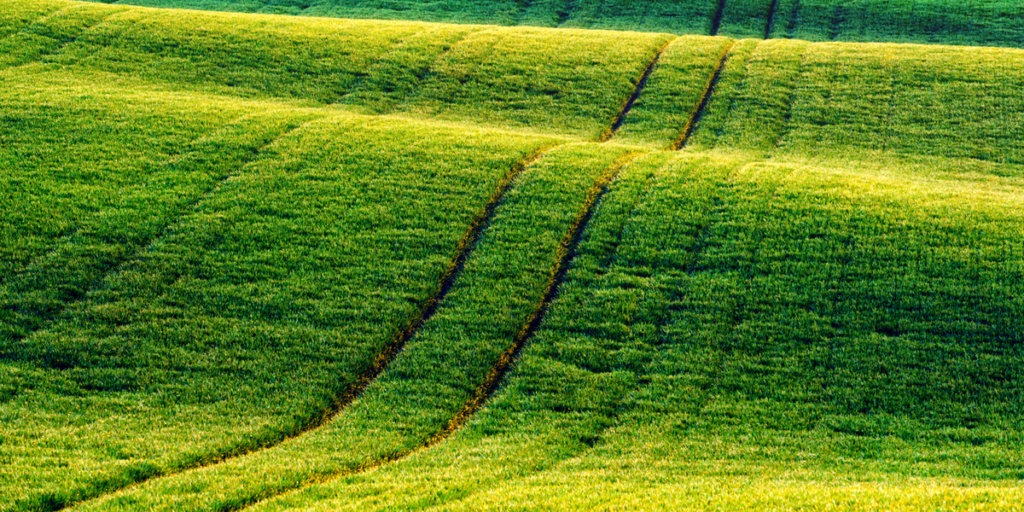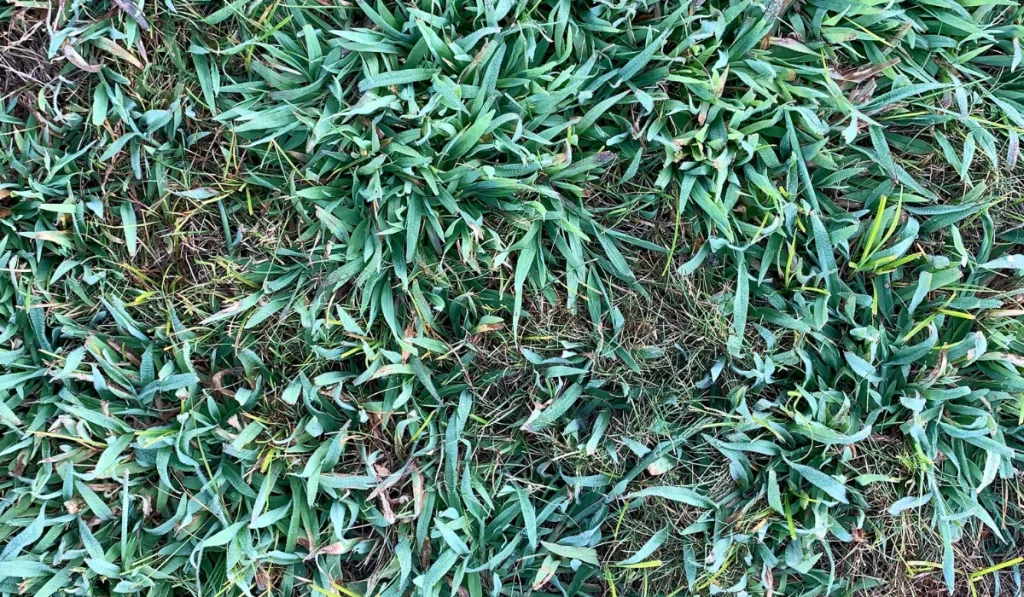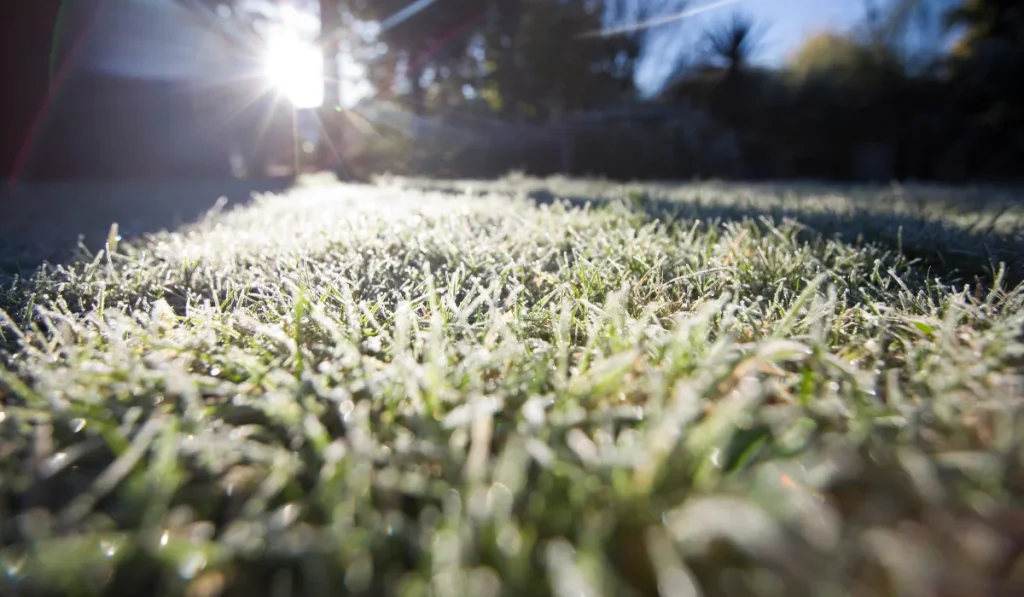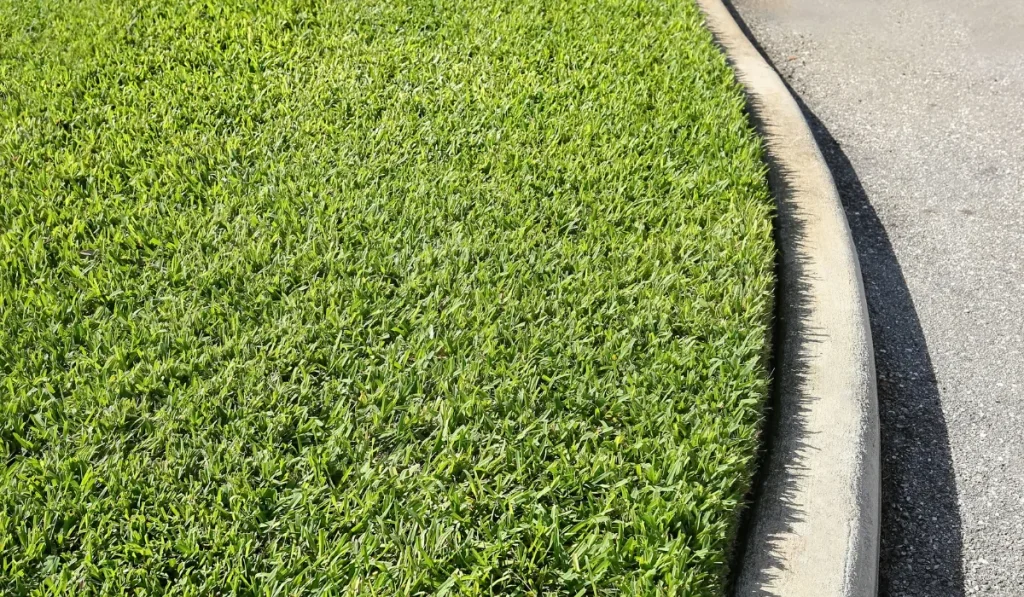Have you heard about Greenwave grass yet? It’s been on the rise as a popular alternative to traditional grass, and it promises to be a low-maintenance solution to your lawn care woes.
But before you rush out and get some for yourself, let’s take a closer look at this newfangled lawn care option.
Here’s a breakdown of the pros, cons, and maintenance involved in keeping your own greenwave grass.
Key Takeaways
- Greenwave grass is the ideal type of sod for many homeowners, offering a beautiful pattern of growth with high disease resistance.
- This kind of grass holds its winter color well.
- The only downside to choosing Greenwave grass is that it does not hold up to foot traffic as well as some other types of sod.
What Is Greenwave Grass?
Greenwave Grass is a low-maintenance turfgrass variety that offers many beautiful benefits. It naturally grows in a thick and dense type of grass mat with deep green, waxy foliage. It requires significantly less water than traditional varieties, while also withstanding drought better. It also doesn’t require frequent mowing, which makes it a more sustainable alternative to other kinds of grass.
Additionally, its ability to withstand both foot traffic and soil compaction means less wear and tear over time, meaning it can last for years without looking worn out or relying on heavy care schedules. Greenwave Grass looks great in any landscape, providing homeowners with an attractive alternative that is both beautiful and easy to maintain.
Greenwave, a Creeping Red Fescue species, is the perfect addition to any landscape that has slopes or requires a mounding effect. Not your typical neighborhood grass, it grows up to 12″ before flopping over and creating a meadow-like scene.
Greenwave Grass
Here are a few essential details about Greenwave grass that you need to know:
Color
Greenwave grass is a beautiful, evergreen color choice all year round that can turn someone’s outdoor area into an oasis of lush greenery. It has very fine leaf widths of less than 1/16th inch and, depending on your preference, can be kept to around 2″- 4″ when mowed or 8″ – 10″ with it unmowed.
Drought Tolerance
This type of grass has a high drought tolerance and also high disease resistance which makes it an ideal choice for low-maintenance yards.
Disease Tolerance
Greenwave grass has excellent pest and disease tolerance.
Shade Tolerance
Along with its water resistance, Greenwave grass also does well in 40% filtered light or daylight hours, making it able to withstand even the most shaded parts of one’s lawn.
Heat Tolerance
Greenwave grass is a hardy option for homeowners looking to spruce up their lawn. Its moderate heat tolerance makes it an ideal choice for climates that experience warm temperatures but not extreme heat or cold. Its strong root system helps the grass resist drought conditions, keeping the lawn in prime condition despite intense dry spells.
Winter Color
Greenwave grass is the perfect choice if you are looking to add some year-round beauty to your landscape. Not only does this hardy type of grass look vibrant during the spring and summer months, but it also can retain its good winter color for a lush look even after the weather has cooled down.
Recovery from Moderate Wear
Greenwave grass has decent recovery abilities when experiencing moderate wear, but is most often used in low traffic areas like the side of roads or hillsides for its beautiful curb appeal.
The same is true for commercial buildings, golf courses, and cemeteries,where an attractive mounding groundcover is desired. It looks stunning from afar with its emerald green blades.
Pros of Choosing Greenwave Grass
Greenwave grass has a lot to offer when it comes to lawn care. Its year-round color makes it an attractive option even in the winter months. It also has good tolerance against pests and disease, so you don’t have to worry about pesky critters ruining your lawn.
Additionally, its high drought tolerance means that you won’t have to water it as often as other types of grass, saving you time and money. Lastly, its high shade tolerance makes it an ideal choice if your yard doesn’t get much sunlight.
Cons of Choosing Greenwave Grass
Of course, like any type of grass, there are some downsides to choosing Greenwave Grass as well.
First off, its low wear tolerance means that it doesn’t take well to heavy foot traffic or dogs running around on it too much. Additionally, while it does have moderate heat tolerance, it isn’t quite as tolerant as some other types of grass in hot weather climates.
Finally, due to its shallow roots system, Greenwave Grass isn’t quite as durable as some other varieties of turfgrass which can lead to more maintenance over time.
Maintenance Tips for Greenwave Grass
Are you the proud owner of a beautiful, lush Greenwave grass lawn? If so, then congratulations—you’ve taken the first step towards creating an outdoor oasis! But with great greenness comes great responsibility. Here’s how to care for your lawn.
Watering
Greenwave grass, while typically hearty and resilient, requires careful attention when it comes to watering. During the first 20 days of growth, it’s best to keep the topsoil moist up to a depth of three inches.
Afterwards, water should be increased according to temperature and location factors. In warm weather, three or more waterings per week is recommended whereas cooler temperatures may require only one or two per week.
Furthermore, depending on soil type, sandy areas will require more frequent watering than clay. Since runoff can potentially occur on slopes and mounds, giving those spots a little extra attention with more frequent yet shorter waterings may be necessary for optimal health.
Fertilization
The best way to apply fertilizer is in four- to eight-week intervals during warm weather. This will help keep your lawn looking spectacular. Keep an eye out for changes in color—a light green hue is an indication that more nutrients are needed, and Greenwave’s all-purpose fertilizer provides just that! Simply follow the label directions to make sure your Greenwave grass looks its best.
Mowing
The ideal mowing height should range from 3/8 to 3/4 inches and should be done seven days after installation. For ongoing maintenance, it is recommended to mow at least once per week during the warm season and never more than a third of the blade at once, as that may injure the plant.
It would also be better to avoid mowing when your sod is in a dormant state.
However, if there are considerable seed stalks rising up in spring (12” – 18”), then they can be cut. As for appearance’s sake, Greenwave can be cut at 2 inches for a traditional turf look and feel.
Weeds & Insects
Greenwave grass has moderate resistance to common diseases and can help keep pesky weeds and insects at bay. Once your new sod has been established, you may begin pesticide application if necessary, but it is best to follow the recommendations of your local garden center or turf specialist.
Additionally, dethatching your lawn every two years (or as needed) will help minimize thatch build-up, and spring is the ideal time to do so. With Greenwave grass, you can achieve a lush and beautiful lawn while also reducing weed growth and pest damage!
People Are Also Asking:
How much does Greenwave Grass cost per pallet?
Depending on the type and quantity purchased, pallets of Greenwave Grass can cost between $200 and $450 each. Thanks to its cost-effective nature, Greenwave Grass is quickly becoming a popular choice among home and business owners who want beautiful grass without breaking their budgets.
How does Greenwave Grass compare to Tifgreen Grass?
Greenwave is known for its drought-tolerance, making it an attractive choice for areas with minimal water access and for slopes. Tifgreen grass is most often used by golf courses due to its ability to withstand frequent cutting. In addition, this type of grass thrives with full sun exposure and requires less maintenance than other species.
What are the best tools for caring for sod?
Investing in quality hose pipe attachments, lawn mower blades, sprays, and irrigation systems can help you more effectively maintain a healthy turf. Other products that target fungus and root feeders are important to defend against common grass pests, and it is also beneficial to purchase a soil testing kit so you can monitor pH levels.



